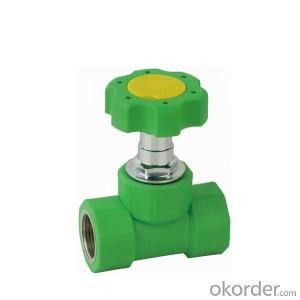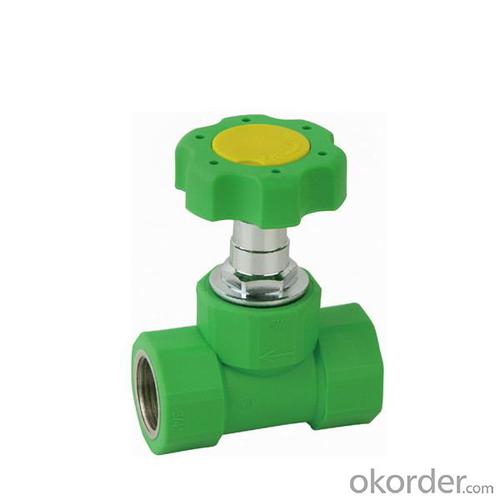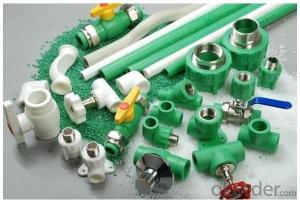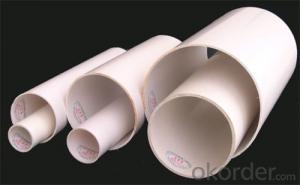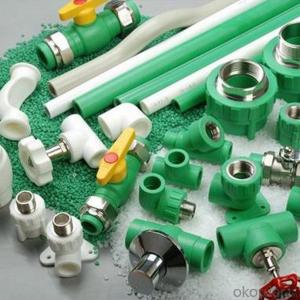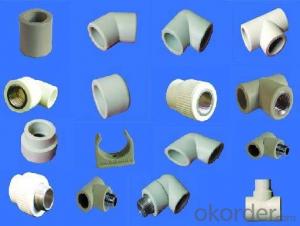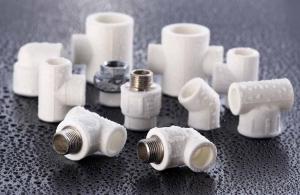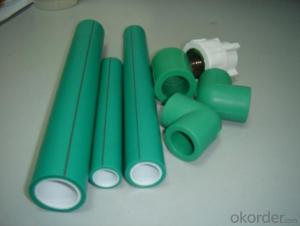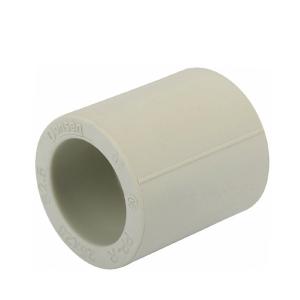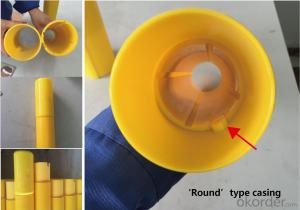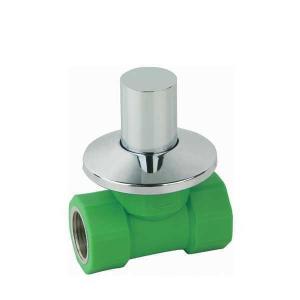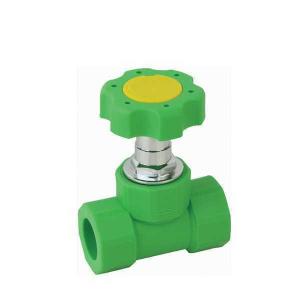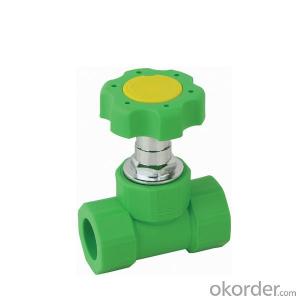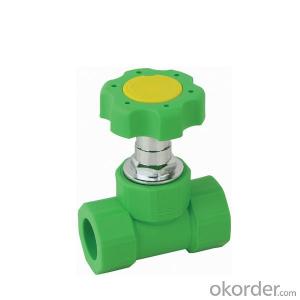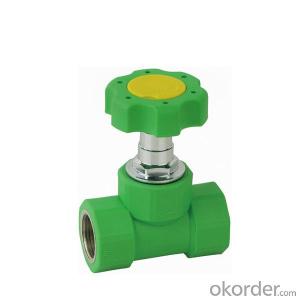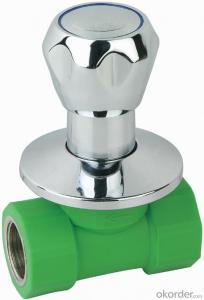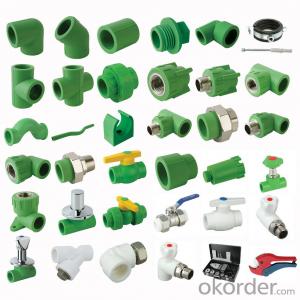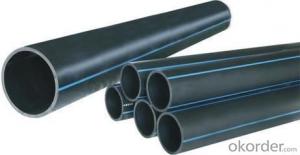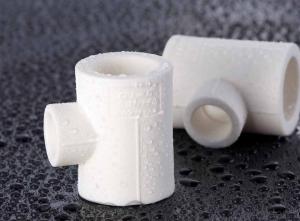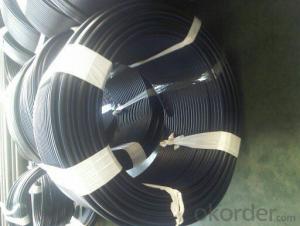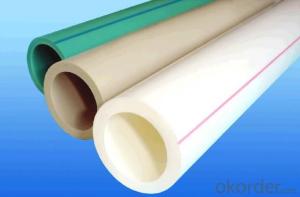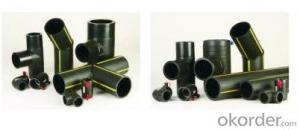45 Degree PP-R Double Female Threaded Stop Valve
- Loading Port:
- Ningbo
- Payment Terms:
- TT OR LC
- Min Order Qty:
- 1000 pc
- Supply Capability:
- 100000 pc/month
OKorder Service Pledge
OKorder Financial Service
You Might Also Like
Product Description:
Picture:
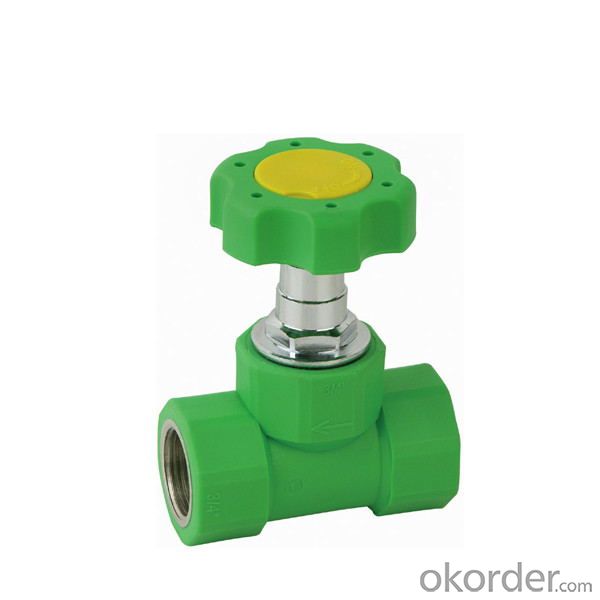
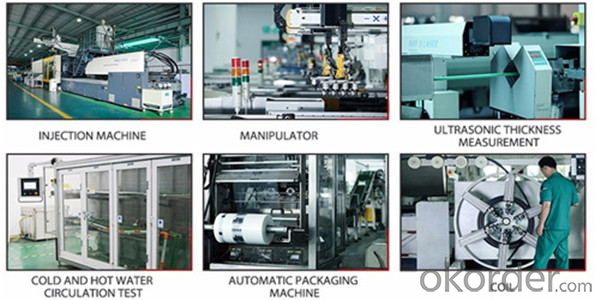
Product Advantages:
1) Healthy, bacteriological neutral, conforming to drinking water standards
2) Resistant to high temperatures, good impact strength
3) Convenient and reliable installation, low construction expenses
4) Excellent heat-insulation property from minimum thermal conductivity
5) Lightweight, convenient to transport and handle, good for labor-saving.
6) Smooth inner walls reduce pressure loss and increase flow speed
7) Sound insulation (reduced by 40% compared to galvanized steel pipes)
8) Light colors and excellent design ensure suitability for both exposed and hidden installation
9) Recyclable, environment-friendly, accords with GBM standards
FAQ:
Q1:How Can I Get A Sample?
A1:You can get samples by communicate with our export sales.
Q2:How Long Is Delivery?
A2:Delivery time will be30-45days according to order quantity.
Q3:What Is The MOQ?
A3:MOQ depends on different items.
Q4:What Is Our Normal Payments Terms?
A4:Our normal payment terms now is: T/T, L/C or western union,paypal
- Q: Are plastic pipe fittings suitable for irrigation in greenhouse farming?
- Yes, plastic pipe fittings are suitable for irrigation in greenhouse farming. They are lightweight, durable, and resistant to corrosion and chemicals commonly used in irrigation systems. Additionally, plastic pipe fittings are easy to install and provide a reliable and cost-effective solution for distributing water efficiently in greenhouse environments.
- Q: How do you connect plastic pipe fittings to pipes?
- To connect plastic pipe fittings to pipes, you typically use solvent cement or adhesive designed specifically for plastic piping. First, ensure both the fitting and pipe are clean and dry. Apply the solvent cement to the pipe and fitting, making sure to evenly coat both surfaces. Then, quickly insert the pipe into the fitting, giving it a slight twist to ensure proper distribution of the cement. Hold the joint firmly in place for a few seconds to allow it to set. It is important to follow the manufacturer's instructions and safety precautions when using solvent cement.
- Q: Can plastic pipe fittings be used for biofuel production facilities?
- Yes, plastic pipe fittings can be used for biofuel production facilities. Plastic pipes are commonly used in various industries, including biofuel production, due to their durability, corrosion resistance, and cost-effectiveness. They provide a reliable and efficient solution for transporting fluids and can withstand the harsh chemical environments often found in biofuel production processes.
- Q: What materials are commonly used for plastic pipe fittings?
- Commonly used materials for plastic pipe fittings include PVC (polyvinyl chloride), CPVC (chlorinated polyvinyl chloride), PEX (cross-linked polyethylene), and ABS (acrylonitrile butadiene styrene).
- Q: Can plastic pipe fittings be used for water treatment plants?
- Yes, plastic pipe fittings can be used for water treatment plants. Plastic pipe fittings are often preferred in water treatment plants due to their corrosion resistance, durability, and ease of installation. They are commonly used for various applications such as conveying, distributing, and controlling water flow in these facilities.
- Q: Can plastic pipe fittings be used for wastewater treatment in industrial settings?
- Yes, plastic pipe fittings can be used for wastewater treatment in industrial settings. Plastic pipe fittings are commonly used in wastewater treatment due to their durability, corrosion resistance, and ability to handle a wide range of chemicals and temperatures. They are also relatively easy to install and maintain, making them a cost-effective choice for industrial wastewater treatment systems.
- Q: How do plastic pipe fittings handle extreme weather conditions?
- Plastic pipe fittings are designed to withstand extreme weather conditions quite effectively. They are typically made from durable materials such as PVC or ABS, which have excellent resistance to temperature variations, UV exposure, and moisture. These fittings can endure freezing temperatures, intense heat, and heavy rain without deteriorating or losing their structural integrity. Additionally, plastic fittings often have built-in features like expansion joints or flexible connections that allow them to adapt to changes in temperature and prevent cracking or breaking. Overall, plastic pipe fittings are reliable and suitable for various climates.
- Q: Are plastic pipe fittings resistant to organic solvents?
- Yes, plastic pipe fittings are generally resistant to organic solvents.
- Q: Are plastic pipe fittings resistant to sunlight exposure?
- Yes, plastic pipe fittings are generally resistant to sunlight exposure.
- Q: Are plastic pipe fittings easy to install?
- Yes, plastic pipe fittings are generally easy to install. They are lightweight, require no special tools, and can be quickly connected using simple techniques like solvent welding, compression fittings, or push-to-connect systems. Additionally, plastic pipe fittings are versatile and can be installed in various plumbing and water supply applications.
Send your message to us
45 Degree PP-R Double Female Threaded Stop Valve
- Loading Port:
- Ningbo
- Payment Terms:
- TT OR LC
- Min Order Qty:
- 1000 pc
- Supply Capability:
- 100000 pc/month
OKorder Service Pledge
OKorder Financial Service
Similar products
Hot products
Hot Searches
Related keywords
